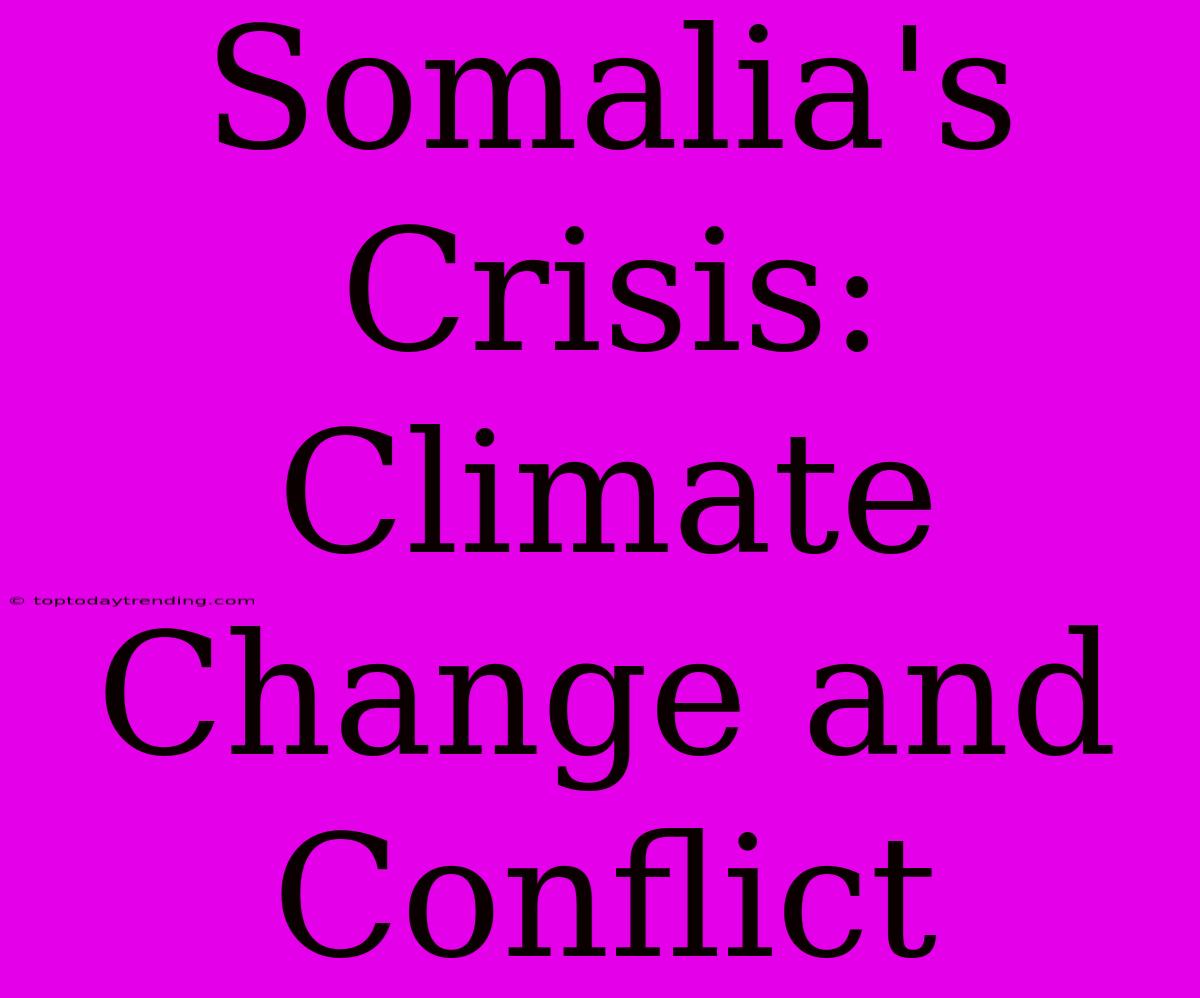Somalia's Crisis: Climate Change and Conflict
Somalia, a nation in the Horn of Africa, has been grappling with a multifaceted crisis for decades. While conflict and instability have long plagued the country, climate change has emerged as a critical exacerbating factor, intensifying existing challenges and creating a dangerous feedback loop. This article delves into the complex interplay between climate change and conflict in Somalia, exploring its devastating consequences and outlining potential pathways towards a sustainable future.
The Impact of Climate Change on Somalia
Somalia's arid and semi-arid climate makes it particularly vulnerable to climate change. Drought is a recurring issue, with the frequency and severity increasing in recent years. This has devastating impacts on the country's agriculture, livestock, and water resources, leading to food insecurity, malnutrition, and displacement.
Key Impacts:
- Intensified Droughts: Prolonged periods of drought have become more frequent and intense, leading to widespread crop failure and livestock losses. This has driven millions of Somalis into displacement and has fueled existing humanitarian crises.
- Water Scarcity: The diminishing rainfall and erratic weather patterns have drastically reduced water availability, impacting water sources for both human consumption and agriculture. This has led to increased competition for water resources and strained relationships between communities.
- Desertification: The decline in rainfall and soil degradation have resulted in the expansion of deserts, impacting arable land and further impacting livelihoods.
- Increased Flooding: While droughts dominate, Somalia is also experiencing increased flooding events, particularly in coastal areas, causing damage to infrastructure and exacerbating displacement.
Conflict as a Consequence and Catalyst
Climate change's impact on Somalia's environment has fueled existing conflict and created new tensions, compounding the overall crisis.
How Climate Change Drives Conflict:
- Competition for Resources: Dwindling resources like water and land have intensified competition between communities, leading to conflict over access and control.
- Displacement and Migration: Millions have been displaced due to drought-induced food insecurity and the loss of livelihoods. This mass displacement has created tensions and strained resources in host communities, increasing the risk of conflict.
- Weaker State Institutions: Climate change has weakened state institutions and undermined their capacity to respond effectively to crises. This has created opportunities for armed groups to exploit vulnerabilities and further destabilize the country.
- Increased Vulnerability to Extremism: Climate change-related stressors, such as food insecurity and displacement, have contributed to the rise of extremist groups who exploit societal grievances and offer alternative forms of power and control.
Breaking the Cycle of Climate Change and Conflict
Addressing the complex interplay between climate change and conflict in Somalia requires a multi-pronged approach that addresses both the immediate humanitarian needs and the underlying causes of instability.
Key Strategies:
- Building Resilience: Investing in climate-smart agriculture, promoting water conservation, and strengthening early warning systems can help communities adapt to the impacts of climate change and build resilience.
- Conflict Prevention and Resolution: Prioritizing conflict prevention and resolution mechanisms, including addressing land rights disputes and promoting inter-community dialogue, is crucial for mitigating tensions and creating a more stable environment.
- Strengthening Governance: Supporting the development of effective and accountable governance structures is essential for ensuring a more equitable distribution of resources and the implementation of sustainable development strategies.
- International Cooperation: Strengthening international cooperation and providing financial and technical support for climate adaptation and conflict prevention efforts is crucial for addressing the scale and complexity of the challenge in Somalia.
Conclusion:
The crisis in Somalia underscores the critical interconnectedness of climate change and conflict. By recognizing the complex relationship between these forces, we can develop effective strategies that address the root causes of vulnerability and build a more peaceful and sustainable future for Somalia. This requires not only immediate humanitarian assistance but also long-term investments in climate adaptation, conflict prevention, and good governance.

